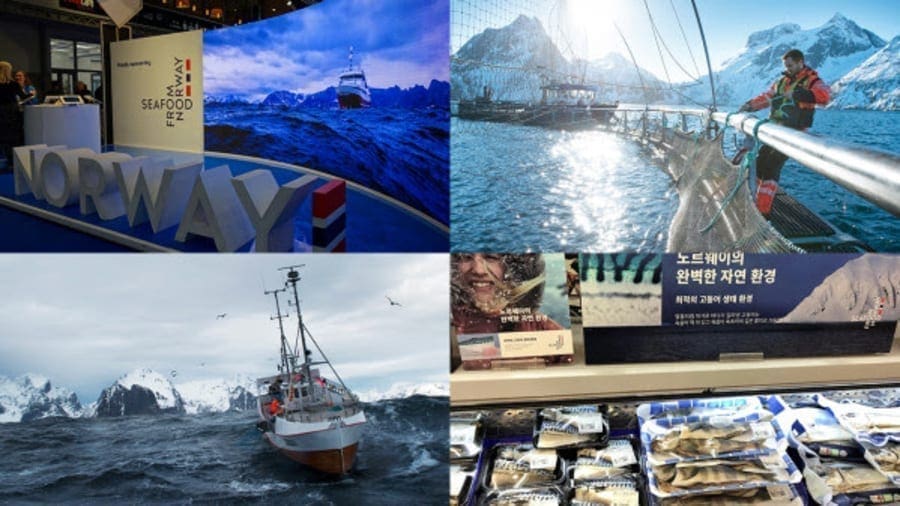NORWAY – Norway increased its seafood exports by 8% to a total value of NOK 107.3 billion (US$12.19bn) in 2019 compared to NOK 98.71 billion (US$11.21bn) exported in 2018, which was a record year for the country.
This was despite a 3% decrease in volume to 2.7 million tonnes, which according to data from the Norwegian Seafood Council corresponded to 36 million meals every day throughout the year.
Renate Larsen, CEO of the Norwegian Seafood Council says; “The Norwegian seafood industry deliver high-quality products that correspond with global trends.
“Consumers around the world are seeking healthy, sustainable, and tasty food. Norwegian seafood is meeting this demand.”
Tom-Jørgen Gangsø, Director of Market Insight and Market Access at the Norwegian Seafood Council added: “In addition to a weak Norwegian krone and improved market access, we have seen a rise in prices for several of our most important commercial species.
“In sum, this has led to strong demand and higher prices for Norwegian seafood.”
The growth in value of exports was supported both by the aquaculture and fisheries sectors. However, the relationship between aquaculture and fisheries changed slightly from last year.
Aquaculture represents 71% by value, and 44.6% by volume. In 2019, Norway exported 1.2 million tonnes of fish from aquaculture worth NOK 76.5 billion (US$8.69bn).
This represented a 7% growth by volume an 8% increase in the export value by NOK 5.6 billion (US$570m) compared to 2018.
Fisheries account for 29% of total seafood exports measured by value and 55.4% measured by volume.
For fisheries, export volume totaled 1.5 million tonnes, worth NOK 30.8 billion (US$3.5bn). This is a 10% reduction in volume, but a 10% year-on-year increase in value.
The largest species
Salmon is by far the largest species both in terms of volume and value accounting for 1.1 million tonnes of total exports in 2019 amounted, representing NOK 72.5 billion (US$8.24bn) in export value and 7% increase from 2018.
For the fisheries sector, cod was the largest species measured in terms of value. However, cod exports in 2019 fell by 8% to 181,000 tonnes and 7% to NOK 10.1 billion (US$1.15bn) by value compared to 2018.
Trout was the second major exported fish species in the country with a value of NOK 3.7 billion (US$420m) and 59,600 tonnes in volume. Volumes increased by 29% during the year.
Mackerel was the second largest species in the catch sector whilePrawns, Haddock, King crab and herring species also recorded considerable growth both in volume and value.
Markets
2019 saw a significant increase in the trade of seafood between Norway and China especially for the salmons. Throughout the year, market access was bettered terms for Norwegian players with interest in the Chinese market.
At the same time, Norwegian producers exported an additional 7% seafood by volume to 1.6 million tonnes to the EU worth NOK 68 billion (US$7.72bn), representing a 4% increase compared to 2018.
Value of exports to Asia and Eastern Europe also posted a double digit growth to NOK 21.4 billion (US$2.43bn) and NOK 4.3 billion respectively.
Poland remained Norway’s largest market in terms of export value totalling to NOK 10.6 billion (US$1.2bn) while Denmark, now the second largest market for Norwegian seafood in terms of export value generated NOK 9.2 billion in 2019.
Notably, research from the Norwegian Seafood Council shows increased confidence by consumers from various markets on Norwegian seafood and projects that the value of sustainability – export value could potentially double by 2030.
“Particularly among the younger population we see an increasing trend were climate, environment and health are increasingly important.
“Consequently, there is an increasing willingness to pay for sustainable food in most markets,” says Renate Larsen, CEO of the Norwegian Seafood Council.











